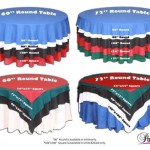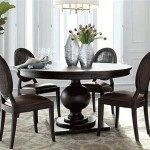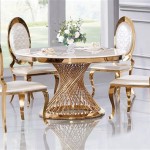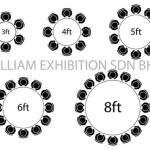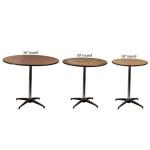How To Make a Photo Backdrop With Plastic Tablecloths
Creating a professional-looking photo backdrop doesn't require expensive studio equipment. Plastic tablecloths offer a cost-effective and versatile solution for photographers, content creators, and event planners. Their availability in a wide range of colors and patterns makes them adaptable to various themes and aesthetics. This article outlines how to construct a photo backdrop using plastic tablecloths, providing practical guidance for achieving high-quality results.
Gathering Materials: The process begins with assembling the necessary materials. These include plastic tablecloths in the desired colors or patterns, scissors, tape (masking tape, duct tape, or gaffer's tape are recommended), and a backdrop support system. The support system can be as simple as a wall, a door, or a freestanding backdrop stand. For larger backdrops, PVC pipes or wooden dowels can be constructed into a frame. Measuring the desired backdrop dimensions beforehand helps determine the number of tablecloths required.
Preparing the Support System: The chosen support system should be stable and secure. If using a wall or door, ensure the surface is clean and free of obstructions. For freestanding backdrop stands, ensure they are properly assembled and weighted down if necessary to prevent tipping, particularly in outdoor settings. If constructing a DIY frame from PVC or wood, ensure all joints are securely fastened.
Measuring and Cutting the Tablecloths: Accurate measurement is crucial for a seamless backdrop. Measure the dimensions of the support system and mark the corresponding measurements on the tablecloths. Sharp scissors are recommended for clean cuts, minimizing fraying. If using patterned tablecloths, careful alignment of the pattern across multiple tablecloths creates a more cohesive look.
Attaching the Tablecloths to the Support: Securing the tablecloths to the support system requires a strategic approach. Start by attaching the top edge of the first tablecloth to the support using tape. Masking tape is generally preferred for walls or doors to prevent damage to the surface. Duct tape or gaffer's tape offer greater strength and durability for freestanding stands or outdoor use. Ensure the tablecloth is taut to prevent wrinkles or sagging. Overlapping subsequent tablecloths slightly creates a smoother, uninterrupted surface and hides any tape seams.
Creating a Seamless Look: Achieving a professional finish involves minimizing visible seams and wrinkles. Strategically placing tape on the back of the backdrop, where it will be less noticeable, helps maintain a clean front. Gently smoothing the tablecloths as they are attached helps eliminate wrinkles. For larger backdrops or those requiring a more polished appearance, consider using a steamer to remove stubborn wrinkles. Steamers should be used cautiously and at a safe distance to avoid melting the plastic.
Lighting Considerations: Proper lighting significantly impacts the final photographic result. Avoid direct sunlight, which can create harsh shadows and wash out colors. Soft, diffused light is ideal. Positioning lights at a 45-degree angle to the backdrop minimizes glare and creates a more even illumination. Experimenting with different lighting setups helps determine the most flattering lighting for the subject and the chosen backdrop color.
Choosing the Right Tablecloth: The choice of tablecloth impacts the overall aesthetic of the backdrop. Solid colors provide a classic, versatile backdrop suitable for a variety of purposes. Patterned tablecloths can add visual interest and create a themed atmosphere. Consider the subject matter and the desired mood when selecting the tablecloth color and pattern. The tablecloth’s opacity also plays a role. Thicker, more opaque tablecloths provide better coverage and prevent the background from showing through.
Maintenance and Storage: Plastic tablecloths are relatively easy to clean and store. Most spills can be wiped clean with a damp cloth. For stickier substances, mild soap and water can be used. Allow the tablecloths to dry completely before storing them. Folding the tablecloths neatly prevents creases and wrinkles. Storing them flat or rolled on a tube helps maintain their shape and prevents damage. Proper storage ensures they remain in good condition for future use.
Adapting for Different Uses: The versatility of plastic tablecloths extends beyond photography backdrops. They can be used for event decorations, party backdrops, video conferencing backgrounds, and even craft projects. Their affordability and ease of use make them a practical solution for various creative endeavors.
Exploring Creative Variations: Beyond single-color or patterned backdrops, consider exploring creative variations. Layering different colored tablecloths creates depth and visual interest. Cutting the tablecloths into strips or other shapes allows for geometric or abstract designs. Adding embellishments like tassels, ribbons, or balloons further personalizes the backdrop and enhances its visual appeal. Embracing creativity and experimentation opens up a world of possibilities for unique and impactful backdrop designs.

Diy Pinata Fringe Photo Backdrop A Kailo Chic Life

Diy Party Background For 5 Or Less

Photo Booth Backdrop Makoodle

Diy Pinata Fringe Photo Backdrop A Kailo Chic Life

Easy Diy Fringe Backdrop A Step By Tutorial

Diy Party Background For 5 Or Less

Easy Diy Fringe Backdrop A Step By Tutorial

The Easiest Diy Fringe Tablecloth Party Backdrop Ever

How To Make An Easy Party Backdrop Des And Sses

Diy Photo Backdrop Simply Designing With Ashley
Related Posts

